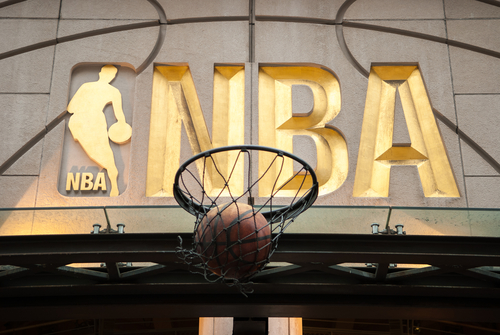Traveling in the NBA: The Price of Making Art
Let me just get this out of the way now: James Harden traveled. He probably traveled more than once in Game 1 of the Rockets’ first-round playoff series against the Timberwolves on Sunday, but I’m specifically talking about his step-back jumper to shake Andrew Wiggins and sink a three-pointer. It feels so good to get that off my chest and speak my truth.
This is not to say that Harden’s step-back is always a travel whenever he deploys it, but this was. How do I know? I can count. More and more, NBAplayers are bending (or straight up breaking) the most sacred, fundamental rule of the sport. That said, does it even matter?
The NBA has never been more exciting to watch on a night-to-night basis. The league is also enjoying some of its best ratings in years thanks to the kinds of athletic feats guys like Harden, Russell Westbrook and Stephen Curry bring to the court. Step-backs, Eurosteps and other eye-catching moves are on the edge of legality and therefore carry a high degree of difficulty.
“The step-back’s a legal move, but the step before the step is not a legal move, which is what we saw the other night,” NBA TV analyst and former NBA executive vice president Stu Jackson told B/R. “There are instances, even on the Eurostep, where the player is getting more than one-and-a-half, two steps at the rim and actually gather, step and then go into a Eurostep. That’s also traveling.”
With the elimination of hand-checking before the 2004-05 season, the game became faster, less physical and more balletic. As the traveling violation becomes more open to interpretation and thornier, like the catch rule in the NFL, one could see a world in which traveling doesn’t disappear like the hand check. Rather, the league would tweak the rule to allow for further offensive innovation.
“It’s one of the rules that’s different around the world,” Jackson said. “A travel in the NBA is not the same as a travel internationally. You have to put the ball down on the floor before you take a step toward the basket.”
It was only nine years ago that the league allowed for the gather step, which gives players two steps after receiving the ball while in motion. Traveling as we know it might end up a thing of the past or, worse yet, akin to defensive three seconds—barely called and far from respected. If I may quote one of the NBA’s greatest philosophers, “Anything is possible.”
The inbounding of the basketball is as routine as tying your shoe or Nick Young taking an ill-advised contested three-pointer. It’s easy to understand how one might forget that dribbling is important. Russ is trying to call a play here as well. The human mind can only juggle so much at once. I don’t blame him for this. Much love to Brodie and the family. Dap me up the next time you see me.
This Kemba Walker thing is egregious, though! Come on, man. What are you doing? You gotta dribble on the inbounds!
One might think that graceful big men of the modern NBA wouldn’t have a hard time keeping their steps to a minimum. You’d be wrong. Here, Kendrick Perkins loses track of his pivot foot and just starts sliding around the court like he’s doing the cha-cha slide at his auntie’s barbecue. Frontcourt players should know their pivot feet better than they know themselves.
Brandon Jennings is another guard trying to call a play while also fully stationary a la Perk in the above clip. This doesn’t violate the letter of the law, but I give Jennings a pass here, because when your defender is practically making himself at home in your personal area, you should be allowed to take a step back to reclaim your time.
This is an interesting one because it illustrates a common scenario for the traveling violation: transitions and fast breaks. Luol Deng is doing just fine here, and then he loses control of his dribble. He almost palms the ball while taking three or four steps before shooting a three in front of a trio of Nets defenders. I’m not going to go back and watch this entire possession, but I bet he bricked it anyway, so who cares? Let it slide!
Another fast-break situation: LeBron James in the open court. It looks like at the last possible moment, he decided to try to dunk from the free-throw line. What referee would ever call traveling on something so majestic? This is where a referee’s discretion must be used. Let the man paint his masterpiece in peace. Would you tell Picasso to chill out with all the weird shapes? Would you convince Leonardo da Vinci that the Mona Lisa should be smiling? Would you tell Master P that the chorus to “Make ‘Em Say Uhh” should have more actual words in it? Nope.
LeBron’s former teammate Matthew Dellavedova demonstrates a similar indecisiveness as he drives to the basket. Is he going to shoot? Is he going to pass? Is he going to walk all the way to the concession stand to get a hot dog? Hard to say here.
The absolute gold standard of travels. The legendary Dirk Nowitzki does a sort of interpretive dance on his way to the hoop. This is what I like to call a “veteran move.” When you’re watching a basketball game and the play slows down into the average post-up, who’s going to notice something like this? Unless you’re pulling clips for “Shaqtin’ a Fool,” your eyes glaze over until the player attempts a shot. I guarantee you that I would notice a lot more travels if I wasn’t tweeting through most NBA games. Use our short attention spans against us, Dirk. Absolutely masterful.

